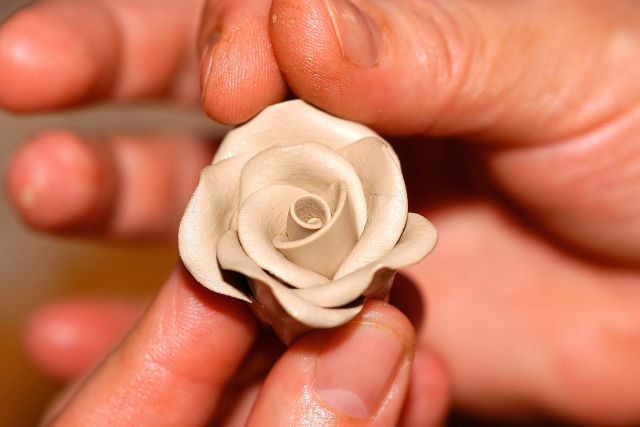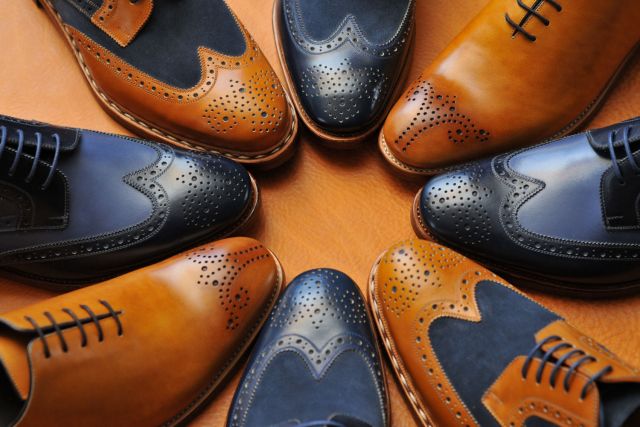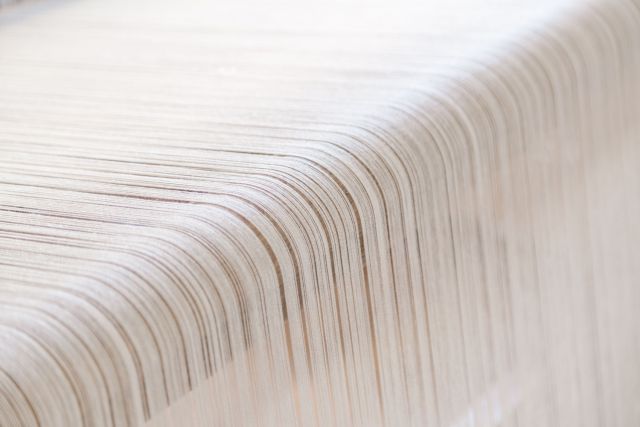The chains of this porcelain sculpture are unglazed, and because of that the porcelain pieces don’t stick together when fired. The sculpture is therefore foldable like a textile and has two faces: one is colourful and structural and the other is closed and colourless. When you turn it over, you realise the different characters it has. The logic is easy to understand, you could change the form and prepare a new object form the same one.
Length 65 cm
Width 39 cm
Height 4.5 cm
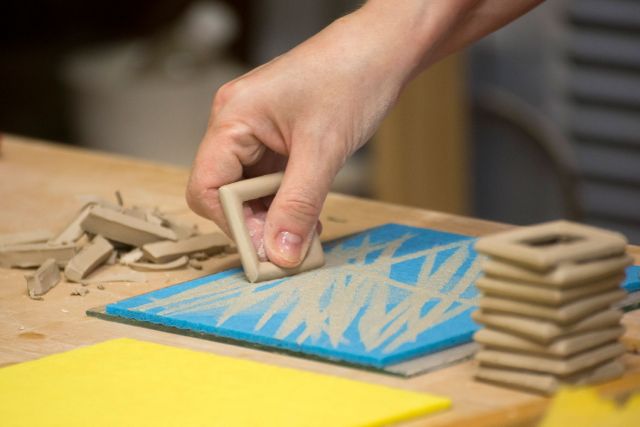
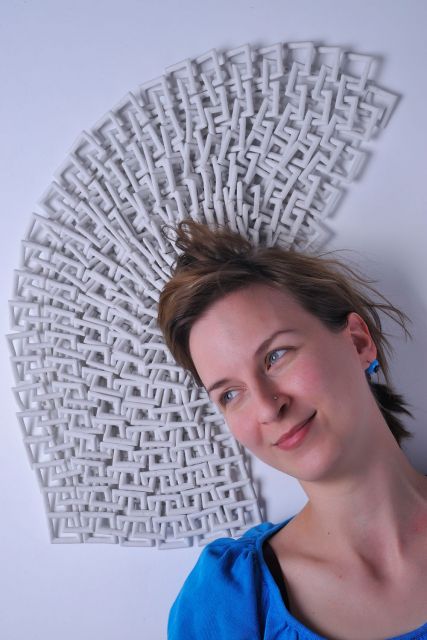
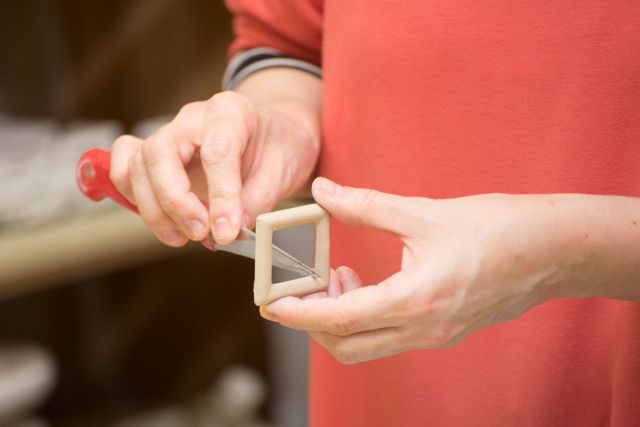
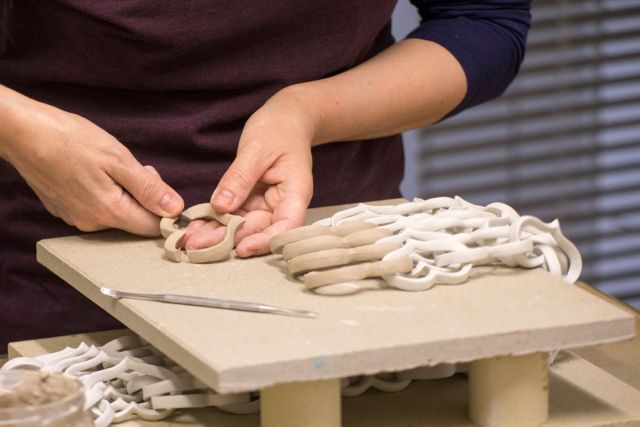
Erika Rejka
- Porcelain maker
- Budapest, Hungary
- Master Artisan
István út 48, 1078 Budapest, Hungary
By appointment only
+36 303096475
Links of China chain
- • Erika makes mobile structures and kinetic creations alongside her ceramics
- • She sees ceramics as cheerful, playful, flexible and open
- • She aspires to reach international audiences with her ceramic chain sculptures
Erika Rejka was first transfixed by the atmosphere of a pottery workshop during a visit to a relative when she was still a baby, she can still recall the scents and colours of it. She later became convinced that it was all just a dream – until she visited the relative again. Thus, a straight path led her to the Hungarian University of Applied Arts, where she first graduated as a silicate designer and ceramicist, later as a drawing and visual education teacher, and then obtained a DLA (PhD) degree. As she became more and more interested in the combination of ceramics with other materials, she also studied goldsmithing. Her most exciting works are kinetic sculptures in which she examines the possibilities of mobility by changing the shapes of the basic ceramic elements and the effect of combining them with different materials – resulting in truly unique creations and often jewellery pieces.
Read the full interviewWorks
Photo: ©All rights reserved

Photo: ©Marton Novak
With this sculptural ceramic piece, Erika Rejka started to work with colour. She wanted to take a step forward: use an uncommon colour, blue, to make the porcelain more unrealistic or unusual. The two walls are connected at their ends. They are like two parallel ribbons, which are able to follow each other or they could move separately because the attached ends always create a cavity. The composition can be either symmetric or asymmetric.
Length 75 cm
Width 13 cm
Height 8 cm

Photo: ©Daniel Ludman
The connected parts of this porcelain sculpture have to find their own place, both literally and metamorphically. They look similar, but they also have their own characters. For this sculpture, Erika Rejka uses dark grey colours, glazing some part of the surface and leaving others bare. Some of the cubes are closed and some remain open.
Length 33 cm
Width 33 cm
Height 15 cm

Photo: ©Milan Racmolnar
Through the mobility of this piece, Erika Rejka would like to show the funny and playful side of porcelain, in contrast to how we may usually think about it. Ceramic art has traditional boundaries because of the material’s role in everyday life, and Erika’s aim is to introduce it in a new way. The sculpture is foldable like a textile. The sound and tactile impression helps to realise how playful the material is.
Length 25 cm
Width 70 cm
Height 3 cm





